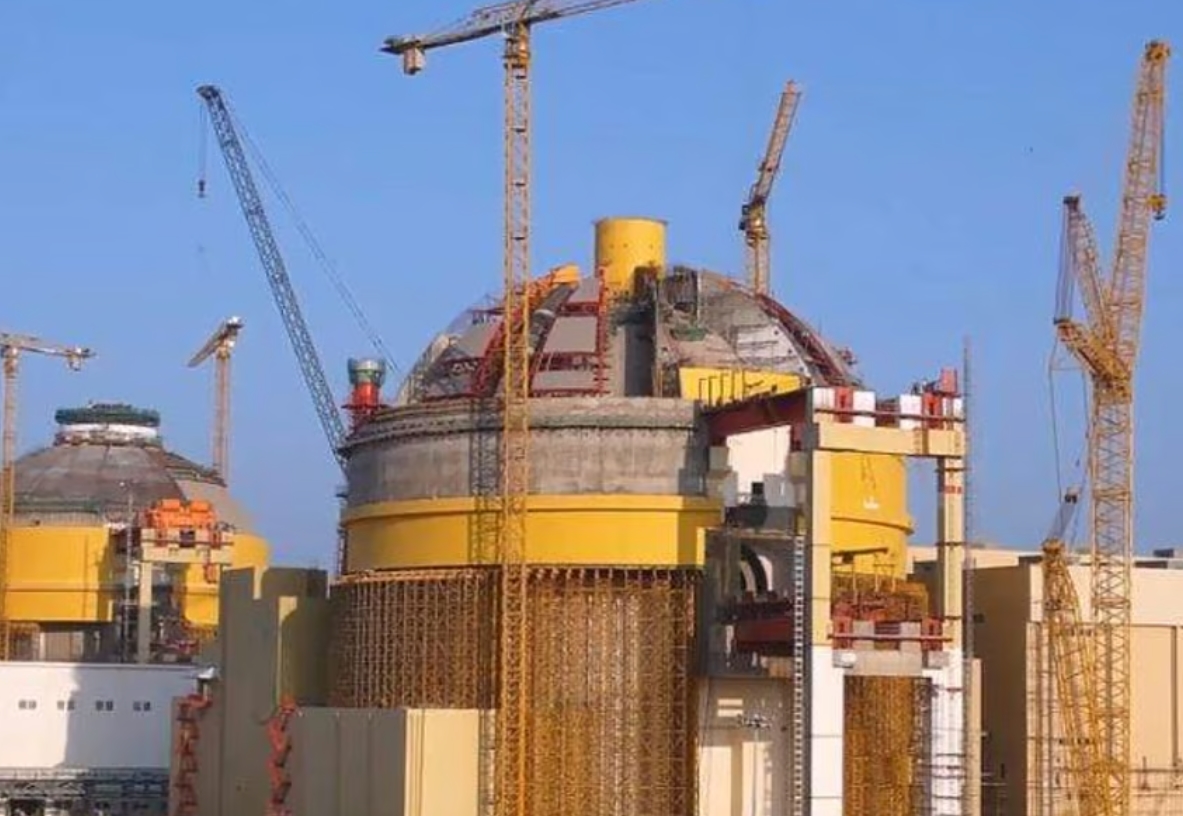India Initiates Core Loading of First Homegrown Nuclear Reactor
Recently, core loading in core loading activities for India’s first indigenous prototype fast breeder reactor (PFBR) in Kalpakkam, Tamil Nadu took place and the event was witnessed by the Prime Minister of India Narendra Modi. This marks a significant milestone for the country’s three-stage nuclear power program towards enhanced energy security.
India’s Closed Fuel Cycle Strategy
India has adopted a closed fuel cycle strategy involving three stages for sustainable nuclear power generation while minimizing high-level waste:
Stage I – Natural uranium fueled pressurized heavy water reactors
Stage II – Fast breeder reactors like the PFBR that produce more fissile material than they consume
Stage III – Thorium-based advanced heavy water reactors
Core Loading
The PFBR’s core refers to the central portion containing the fissile fuel assemblies needed for controlled nuclear fission reactions. The first step was loading specialized control and safety rod assemblies that regulate reactivity.
This will be followed by inactive blanket assemblies surrounding the core to absorb neutrons for breeding plutonium fuel. Finally, the active fuel assemblies with enriched uranium will be inserted to initiate self-sustaining fission once all systems are tested.
The entire process marks the last phase before the reactor can attain criticality and connect to the power grid, making India the second country after Russia to have a commercial FBR.
Significance of Closed Fuel Cycle
The PFBR’s closed fuel cycle promises major advantages:
- Greatly Reduces High-Level Nuclear Waste: FBRs utilize spent fuel from traditional reactors as input
- Enhances Fuel Security: They can breed up to 30% more fissile fuel from thorium than consumed
- Safer Reactor Design: Advanced safety systems and meltdown prevention features
- Meet Sustainable Goals: Closed fuel cycle aids zero carbon future with minimal nuclear waste
Opposition from Anti-Nuclear Groups
However, the project has faced criticism over safety concerns and local opposition. Political parties like have urged the state government to halt operations. While countries like the US have abandoned FBR programs, India maintains a stand that it has incorporated advanced safeguards based on feedback from previous test reactors.
The government has also placed land restrictions around the site to address worries of nearby residents. Regardless, activists allege a lack of transparent communication on risks.
Balancing Sustainable Development
India faces rising energy demands alongside global pressure to quickly decarbonize its economy. An optimal solution requires:
– Maximizing zero-emission renewable capacity additions
– Supporting clean transitional options like nuclear for baseline demands
– Managing community perceptions regarding large industrial projects
Nuclear currently provides just 3% of India’s electricity mix owing to high capital costs. However, sustaining imported fuel dependence raises strategic risks that indigenous FBRs mitigate while ensuring waste efficiency. But safety demonstrations are vital to reassure people on potential threats from new technologies.
Month: Current Affairs - March, 2024
Category: India Nation & States Current Affairs



Thomas Lalthoichung Hrangkhol
March 5, 2024 at 3:39 pmI love to read Gk today